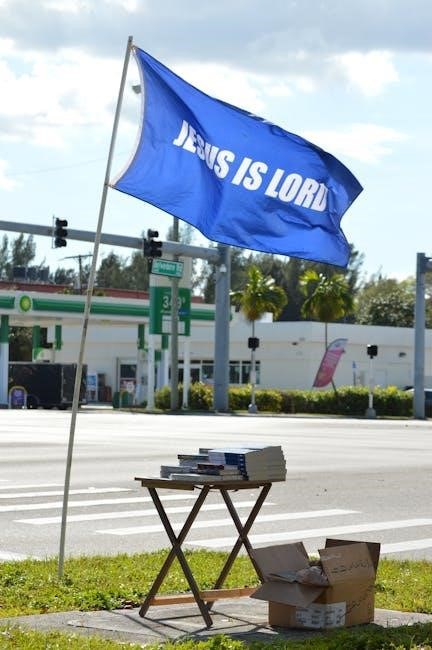The Jakarta Method: Washington’s Anticommunist Crusade
Vincent Bevins’ book unveils a chilling account of US involvement in mass killings during the Cold War. It challenges the conventional narrative of peaceful transitions to capitalism. The book exposes the brutal extermination of leftists, a key part of Washington’s triumph.
Overview of the Book
Vincent Bevins’ “The Jakarta Method” offers a gripping exploration into a dark, often overlooked chapter of Cold War history. The book reshaped nations and impacted lives across the globe, particularly in Indonesia. It uncovers how the United States, under the guise of combating communism, actively supported mass violence and purges. This set a precedent for similar actions elsewhere.
Bevins challenges the conventional view of the Cold War, revealing the global impact of the “Jakarta Method.” He examines the US role in the mass killings in Indonesia in 1965-66, as well as military coups in Latin America. The book demonstrates that the brutal extermination of unarmed leftists was a fundamental part of Washington’s triumph in the Cold War.
The author argues that the Indonesian case became a playbook for right-leaning forces to crush communism in Latin America and elsewhere. The book reveals the hidden story of slaughter in Indonesia, Latin America, and around the world, backed by the US.
Historical Context: Indonesia in the 1960s
In the 1960s, Indonesia was pulled into the global battle between capitalism and communism. This conflict wrought terrible consequences for families. The US discreetly encouraged the events following the failed 1965 coup in Jakarta and its aftermath.
The Political Climate in Indonesia
Indonesia in the 1960s was a nation grappling with immense political turbulence. The country, one of the largest in the world, found itself deeply entangled in the ideological clash between communism and capitalism. Sukarno’s leadership navigated a delicate balance between aligning with socialist blocs and maintaining relations with the West, creating internal divisions;
The Indonesian Communist Party (PKI) had grown significantly, becoming a powerful political force and a source of concern for anti-communist factions within the country, particularly the military. Economic instability and widespread poverty fueled social unrest, further exacerbating the volatile political atmosphere.
Regional tensions and ethnic divisions added layers of complexity to the already precarious situation. The political climate was characterized by intense rivalry, suspicion, and a constant struggle for power among various groups, setting the stage for the tragic events that would unfold.
US Involvement in Indonesian Politics
The United States played a significant, albeit covert, role in Indonesian politics during the Cold War era. Driven by the fear of communism’s spread, the US government actively sought to counter the growing influence of the PKI, providing financial and logistical support to anti-communist elements within the Indonesian military and political landscape.
CIA operations aimed to destabilize Sukarno’s government and undermine the PKI’s power. These operations included propaganda campaigns, funding of opposition groups, and the provision of intelligence to the Indonesian military. The US involvement was part of a broader strategy to contain communism in Southeast Asia, viewing Indonesia as a crucial battleground in the Cold War struggle.
This interventionist approach had profound consequences, contributing to the polarization of Indonesian society and ultimately paving the way for the violent events of 1965-66.
The 1965-66 Mass Killings in Indonesia
The years 1965-66 witnessed a horrific wave of mass killings in Indonesia. Hundreds of thousands, possibly over a million, were murdered. These acts targeted alleged communists, ethnic Chinese, and suspected leftists, forever altering Indonesia’s political and social landscape.
The Alleged Communist Coup Attempt
The 1965-66 mass killings in Indonesia were triggered by an alleged communist coup attempt. This event served as the catalyst for widespread violence. The official narrative, propagated by the Indonesian military, blamed the Communist Party of Indonesia (PKI) for orchestrating a failed coup.
The details surrounding the alleged coup remain contested and shrouded in mystery. Some historians question the extent of the PKI’s involvement, suggesting the event was manipulated to justify a military takeover. Others argue that elements within the military itself may have played a role in instigating the events.
Regardless of the truth, the alleged coup provided a pretext for the Indonesian military to launch a brutal crackdown. This crackdown targeted not only PKI members but also anyone suspected of communist sympathies. The events continue to be a source of controversy.
The Role of the Indonesian Military
The Indonesian military played a central and devastating role in the 1965-66 mass killings. Seizing upon the alleged communist coup attempt, the military, led by General Suharto, launched a systematic campaign to eliminate perceived threats. This campaign targeted members of the PKI, as well as suspected sympathizers.
The military’s actions were characterized by extreme brutality. They were marked by widespread arrests, torture, and extrajudicial killings. Soldiers often worked with local militias, arming and inciting them to participate in the violence. This created a climate of fear and chaos that engulfed the nation.
The military’s role extended beyond simply carrying out the killings. The military also controlled the narrative, shaping public opinion through propaganda and censorship. This ensured that its version of events became the dominant one. The military’s actions remain a dark chapter.
Estimates of Casualties and Impact
Estimating the precise number of casualties from the 1965-66 mass killings in Indonesia remains a difficult and contentious task. However, most credible estimates suggest that at least 500,000 people were killed. Some sources place the death toll as high as one million or more. This makes it one of the worst mass atrocities of the 20th century.
The impact of the killings extended far beyond the immediate loss of life. It had a profound and lasting effect on Indonesian society, politics, and culture. The massacres effectively destroyed the PKI, which was once the largest communist party outside of China and the Soviet Union. It ushered in decades of authoritarian rule under Suharto’s New Order regime.
The killings also left deep scars on the survivors and their families. It led to widespread trauma and a culture of silence that continues to affect Indonesian society today. The events of 1965-66 cast a long shadow.
The “Jakarta Method” as a Model
The “Jakarta Method” refers to the mass killings in Indonesia, serving as a model for anticommunist purges. It was applied in Latin America and globally, showing the brutal extermination of leftists. It highlights Washington’s triumph in the Cold War.
Application in Latin America
The “Jakarta Method,” employed in Indonesia, served as a blueprint for suppressing leftist movements in Latin America. Right-leaning forces utilized similar tactics to crush communism, leaving a lasting impact. Bevins argues the Indonesian case became a playbook for other nations.
The United States, under the guise of combating communism, actively supported mass violence and purges. This approach was replicated in various Latin American countries, resulting in significant consequences. The “Jakarta Method” became synonymous with the brutal extermination of unarmed leftists.
The violence in Brazil, Indonesia, and other countries became a fundamental part of the Cold War. This shows US goals worldwide, as Bevins deepens our understanding. The application of this model reshaped nations and lives across the globe. The Jakarta Method was a dark chapter.
Global Implications of the “Jakarta Method”
The “Jakarta Method” had far-reaching global implications, extending beyond Indonesia and Latin America. It demonstrated a model for suppressing leftist movements worldwide. The United States’ role in supporting mass violence and purges set a dangerous precedent.
The book challenges the conventional view of the Cold War, revealing the global impact of the Jakarta method. The brutal extermination of unarmed leftists became a fundamental part of Washington’s final triumph. This approach reshaped nations and lives across the globe.
The legacy of the “Jakarta Method” continues to influence contemporary political landscapes. It serves as a reminder of the dark side of Cold War politics. The book is a gripping exploration into an overlooked chapter of history. Understanding its global implications is crucial to analyzing current events. The Jakarta Method was a radical new history.
Vincent Bevins’ Analysis
Bevins explores the US role in mass killings, challenging Cold War narratives. He examines military coups in Latin America, revealing Washington’s consequences. Bevins argues the Indonesian case became a playbook to crush communism elsewhere.
Challenging Conventional Cold War Narratives
Vincent Bevins’ “The Jakarta Method” challenges long-held beliefs about the Cold War. For decades, it’s been assumed that developing nations peacefully transitioned into the U.S.-led capitalist system. Bevins demonstrates that the extermination of unarmed leftists was fundamental to Washington’s triumph. The book questions the narrative of peaceful expansion, revealing a darker side of U.S. foreign policy.
Bevins’ work uncovers the hidden story of wanton slaughter in Indonesia, Latin America, and around the world, revealing it as a key part of the Cold War victory. The book challenges the notion that the U.S. promoted democracy and freedom globally, exposing a history of intervention and violence in the name of anti-communism. It compels a re-evaluation of the Cold War’s impact and legacy.
Critique of US Foreign Policy
Vincent Bevins’ book offers a scathing critique of US foreign policy during the Cold War. It argues that the US, under the guise of fighting communism, supported mass violence and purges in Indonesia. This created a precedent for similar actions globally. The book challenges the narrative of the US as a force for good, exposing a history of interventionism and support for authoritarian regimes.
Bevins highlights the devastating consequences of US policies on civilian populations. The book questions the ethical implications of prioritizing anti-communism over human rights. It suggests that US foreign policy often prioritized strategic interests over moral considerations. Bevins’ analysis prompts a critical examination of the long-term impact of US interventions on global stability and democracy. It suggests that the pursuit of anti-communist goals led to tragic and unintended consequences.
Legacy and Contemporary Relevance
The “Jakarta Method” left a dark legacy of violence and repression, shaping political landscapes for decades. The book argues that the Indonesian case became a model for right-leaning forces to crush communism. This had lasting consequences in Latin America and elsewhere. The book highlights the importance of understanding the historical context of US foreign policy.
Bevins’ analysis underscores the continuing need to critically examine the legacy of Cold War interventions. The book raises questions about the long-term impact of these actions on global stability and human rights. It urges us to learn from the mistakes of the past and to promote a more ethical and responsible foreign policy. The “Jakarta Method” serves as a cautionary tale about the dangers of ideological extremism and the importance of upholding human rights. It is a call for accountability and a renewed commitment to justice.


